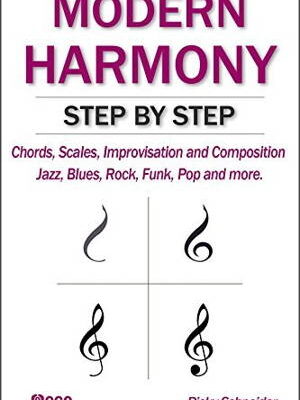MODERN HARMONY Chords, scales
English | 132 pages | Independently published | 2017 | EPUB | 6 MB
Whenever I talk to my students about harmony I have noticed that they panic a bit, generally they seem to have the wrong idea that it is something complex and boring which will take time from them to learn in their practice.As a matter of fact if you can count up to twelve you will be able to learn harmony beside taking advantage of the great benefits that it will provide you in your growth as a musician.
During my student years as I began to understand what I was playing, my relationship with music changed dramatically. At that moment I was able to listen to music better, improvising with a better criterion and I started to interact with other musicians.In ‘Modern Harmony Step By Step’ I have aimed to convey the concepts which have helped me to grow as a musician so much , in an organized and simply way like the relationship between chords and scales, the keys, the tensions etc.
This book is divided into five chapters which had been organised in such a way that you will be able to progress step by step as if you were taking a course.From basic beginners level up to really advanced knowledge. You will find the formation and use of the major and minor scale, modal and artificial scale, the arpeggio, diatonic and non diatonic chords and their corresponding tensions. You will have access to the tools that are required for modern music composition and analyses, and also the application of all these resources on improvisation.Hundreds of examples are provided to illustrate the concepts explained in each point, allowing you to transfer them from the theory to your instrument.The five chapters are
Basic concepts: starting from scratch with the basic elements.
•Major key: scales, flat and sharp notes, diatonic and non diatonic chords (triads, 7th chords and tensions 9, 11 and 13)
•Minor key: natural minor scale, minor harmonic scale, melodic scale. Their chords and combinations.
•Scales and more scales: all the rest of the scales and its use in the improvisation: modals, artificials, relatives, etc.
•Harmony and melody: composition and arrangements, harmonic and melodic analysis, modal harmony, modal interchange, form, harmonization and reharmonization of melodies, etc.




